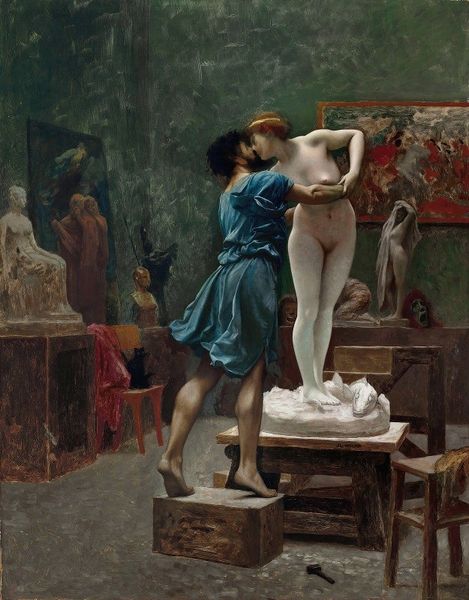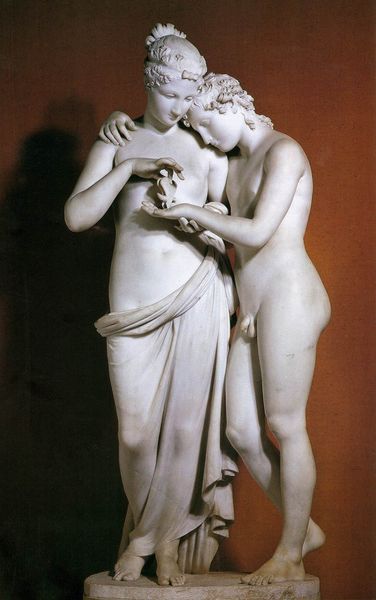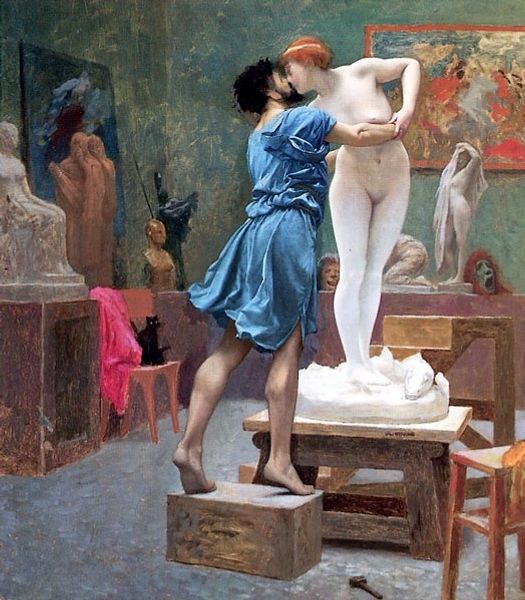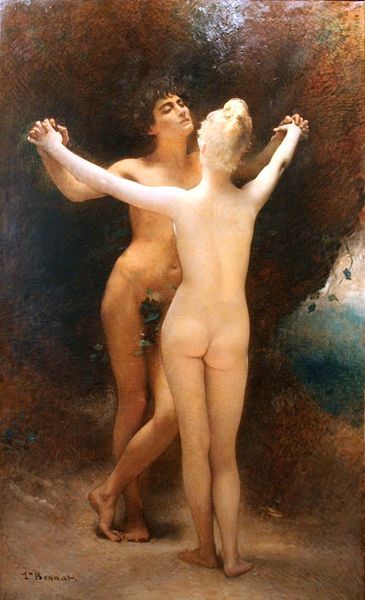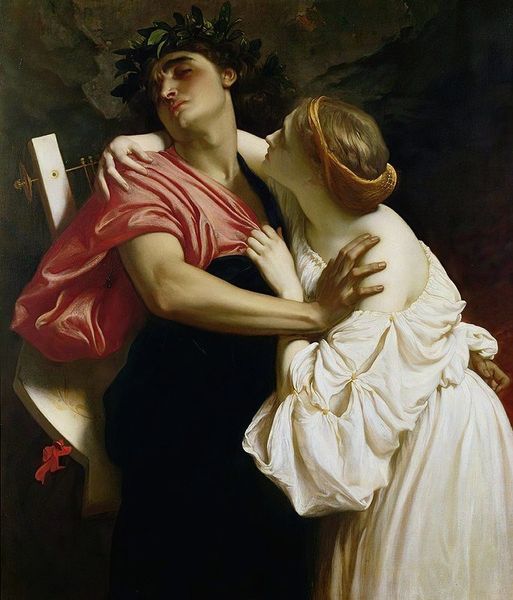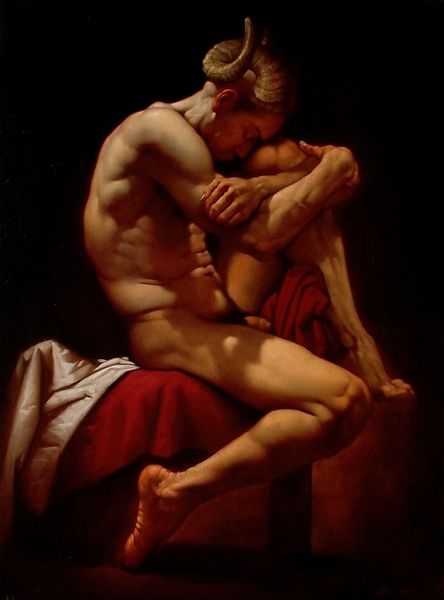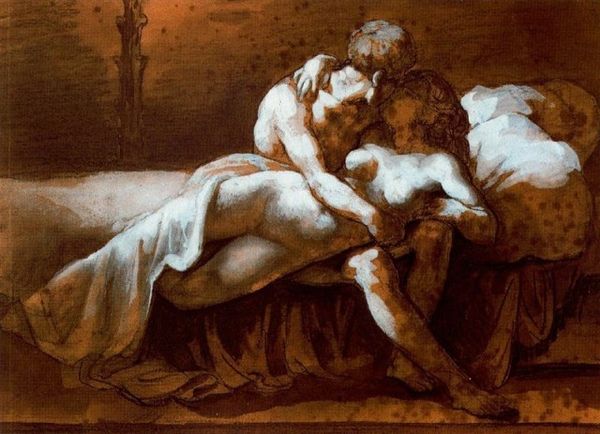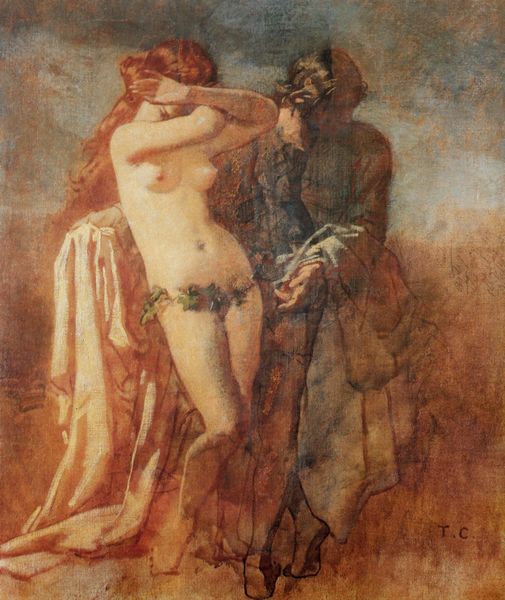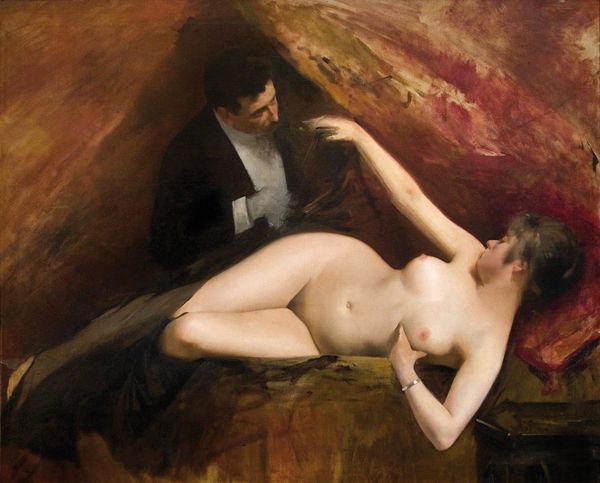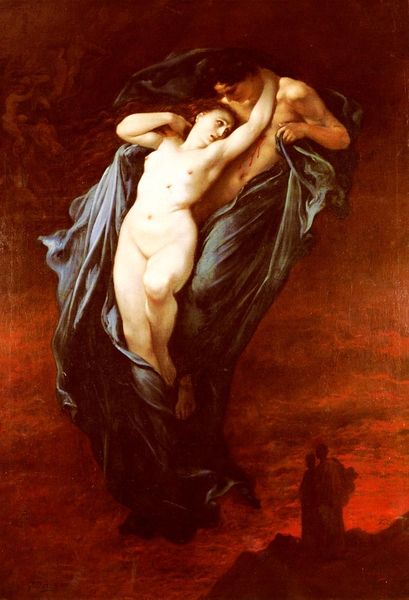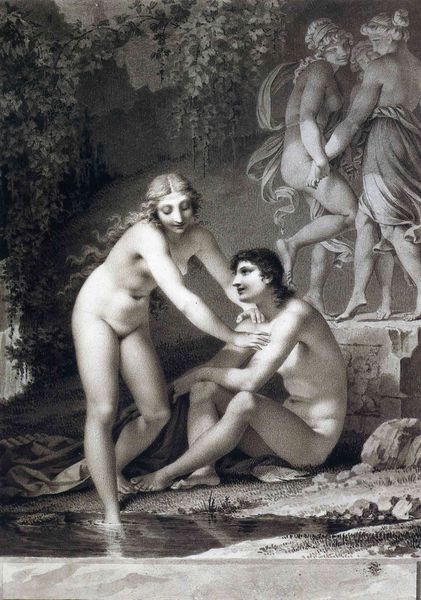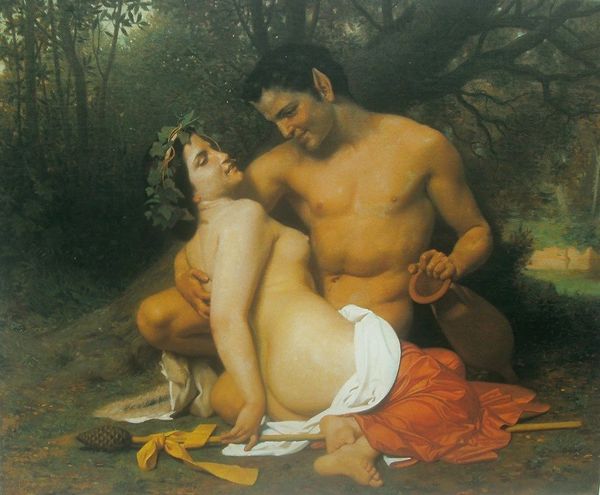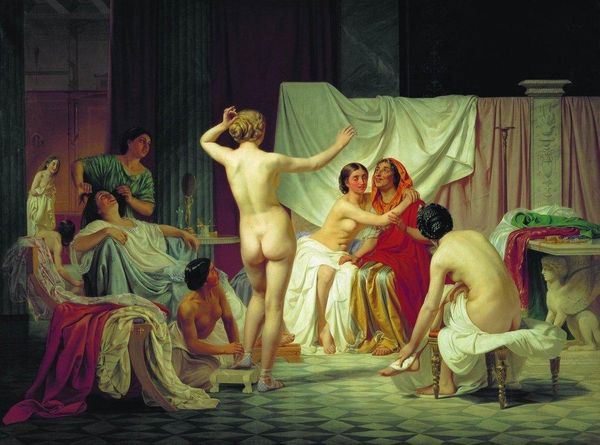
Dimensions: 88.9 x 68.6 cm
Copyright: Public domain
Jean-Léon Gérôme painted 'Pygmalion and Galatea' around 1890, capturing the moment when the sculptor's ivory statue comes to life. Central to this tale is the transformative power of love, embodied here by Cupid, whose presence ensures the statue's awakening. But consider the mask, lurking at the edge of the scene. Masks, throughout history, serve as emblems of transformation. In ancient Greek theatre, masks amplified emotions, allowing actors to embody tragic and comic states. Here, it reflects the power of the sculptor to bring his creation to life. The mask shares an affinity with the statue, in that both are embodiments of a character. Pygmalion's embrace evokes the emotional intensity, the yearning to transcend the boundary between art and reality. The sculptor's desire mirrors our own human impulse to breathe life into our creations, engaging viewers on a deep, subconscious level. This motif, born in Ovid's Metamorphoses, resurfaces through history, each time evolving, taking on new meanings, proving the cyclical nature of symbols and their resonance across time.
Comments
No comments
Be the first to comment and join the conversation on the ultimate creative platform.
